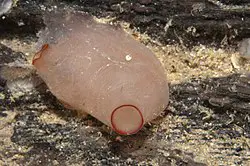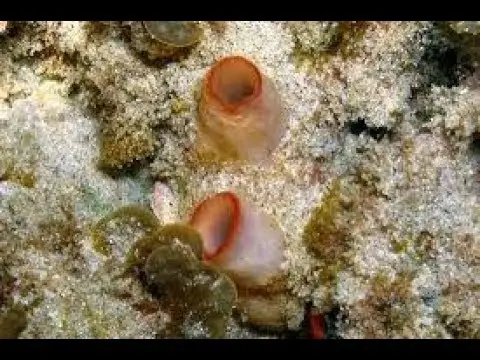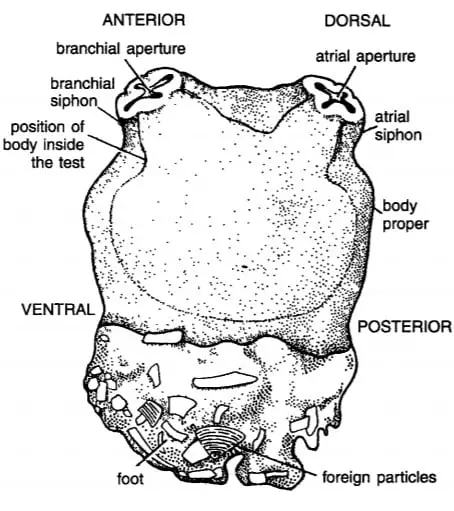Table of Contents
What is Herdmania:
Herdmania is a marine animal that generally lives at the bottom of the ocean floor, remains in a sessile state. Herdmania is like a pouch due to its wrinkled outer covering or test.
Systematic Position of Herdmania:
In the animal kingdom when we try to place Herdmania we face difficulties due to their similarity with several groups of animals. But after intense study today it is considered under subphylum Urochordata in phylum Chordata. Herdmania belongs to the family Pyuridae, order Stolidobranchia, subclass Pleurogona, class Ascidiacea. But some workers tried to place them along with Mollusca, while some workers placed them along with Bryozoa.
Detailed Study on Systematic Position of Herdmania
Alternative Names of Herdmania:
Herdmania is also known by some different popular names, sea squirt, Tunicata, Ascidian. In Herdmania two siphon-like structures present from which they eject water current when they are disturbed, due to this feature they are popularly known as a sea squirt. Herdmania has an outer protective covering known as test or tunic, the presence of this tunic layer makes them popular as Tunicata. The test covering looks like a wrinkled pouch almost similar to the wine pouch made of goat leather which is known as askidian, this look makes them famous in the name of Ascidian.

Geographical Distribution of Herdmania:
Herdmania is generally observed in all parts of the world but some species are confined to a certain geographical area. Some species live in coastal areas which some species live in deep water oceans, Herdmania pallida is generally observed in almost all parts of the world and most of the workers study this species.
Habits and Habitat of Herdmania:
Herdmania generally lives in shallow ocean water but some species also live in the deep oceans. Herdmania is attached to the ocean floor by its foot part and generally live solitarily but sometimes they live in groups.
Sometimes Herdmania forms symbiotic association with gastropods Mollusca, flatworms, crustaceans, sea anemones. With some gastropods Mollusca, for example, Turbinella pyrum Herdmania form a symbiotic relationship, Herdmania can move from one place to another place with the help of Mollusca and get better exposure to food and oxygen, in return Herdmania protect the Mollusca against enemies.

Herdmania is a ciliary feeder, Herdmania feed on the microscopic animals, plants, diatoms which enter into the body through the branchial aperture, and the excretory material, gametes, waste materials go outside the body through the atrial aperture. Respiration also occurs through the water current entering into the body through the branchial aperture, after gaseous exchange carbon dioxide goes outside through the atrial aperture with the outgoing water current.
Detailed Study on Habits and Habitat of Herdmania
External Morphology of Herdmania:
The shape of Herdmania:
Adult Herdmania has a laterally compressed sac or bag-like structure, it almost looks like a purse bag or potato, the shape of the whole body is rectangular or oblong.
Size of Herdmania:
Adult Herdmania is 9 cm to 13 cm in length, 8-9 cm broad and 4 cm to 4.5 cm thick, the foot part is narrower than the upper part of the body.
Colour of Herdmania:
Living Herdmania has a pinkish appearance due to the highly vascularized test and red patches present on the test, red patches are due to vascular ampullae.
Different Parts of Body in Herdmania:
Body Proper:
On the upper broadside of the body is known as body proper, at the free end body proper has two tube-like structures, one is branchial siphon and another one is an atrial siphon. Branchial siphon opens inside into branchial aperture which is considered as mouth opening. Another opening presents at the tip of the atrial siphon known as atrial aperture or excurrent opening. Both branchial aperture and atrial aperture is guarded by four lip-like structure.

Foot:
The lower part of the body is known as the foot which is formed by only a test or tunic and the shape of the foot region is irregular. Different particles like shells of different marine animals, other particles, sand attached to the foot region. Foot shape is dependent on the substratum where Herdmania lives, if Herdmania lives on a solid substratum then the foot part is absent, only the lower part of the body proper form flat base which attached to the solid substratum.
If Herdmania lives in the sand then the foot part becomes extended and narrow to provide their anchorage to the sandy substratum. When the animals detached from the substratum, the foot part helps the animal to maintain body balance, so the foot part is responsible for anchorage as well as maintaining equilibrium.
In Herdmania different body parts occur in a peculiar position, it is due to rotational change during larval metamorphosis. The two flat sides represent the right side and left side, the branchial siphon region is its anterior part, the atrial siphon region is a dorsal part, the foot part below the dorsal part is a posterior part, the foot part below the anterior part is a ventral part.
Reference Habitat and Habits of Herdmania
Hi Everyone!!! Welcome to Imaluop. Imaluop always try to learn some new and he want to share to other people. Here we will try to learn various topics on Science, specially on Biological Sciences.